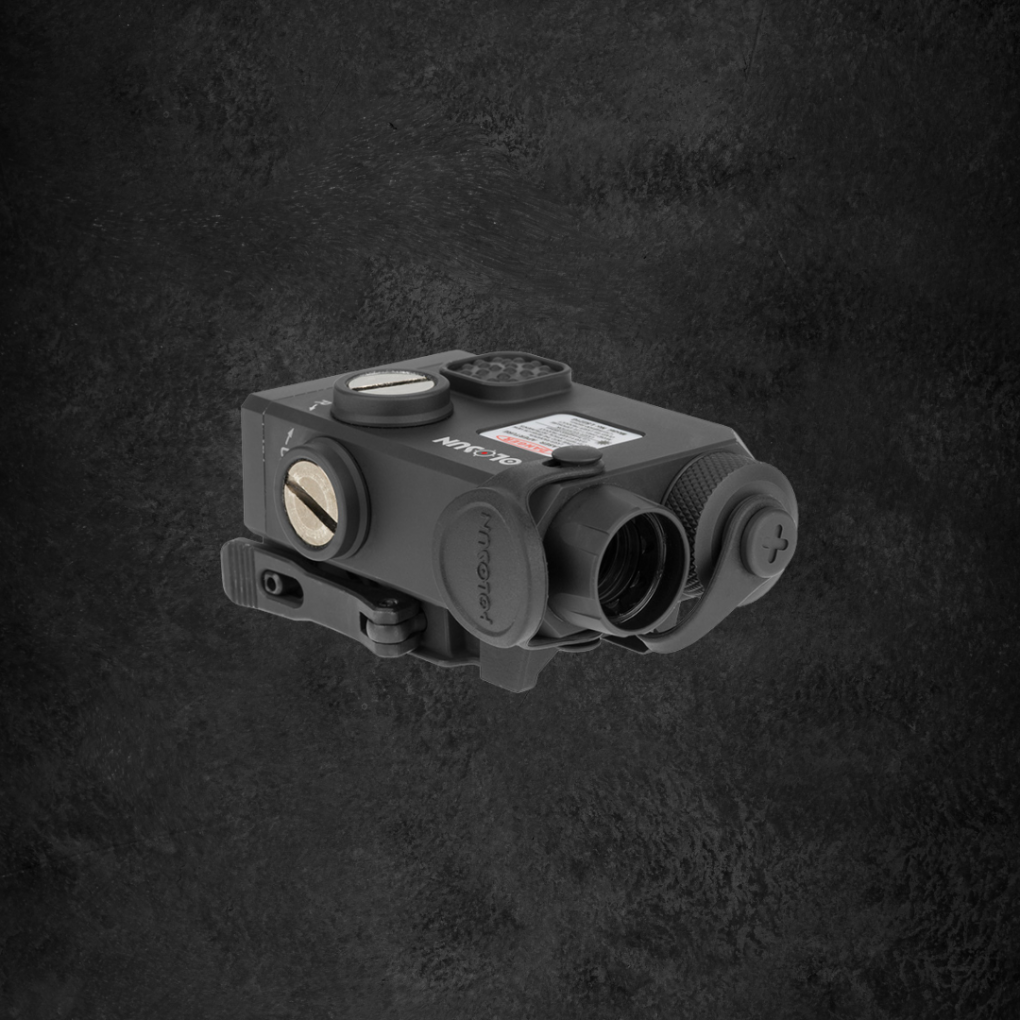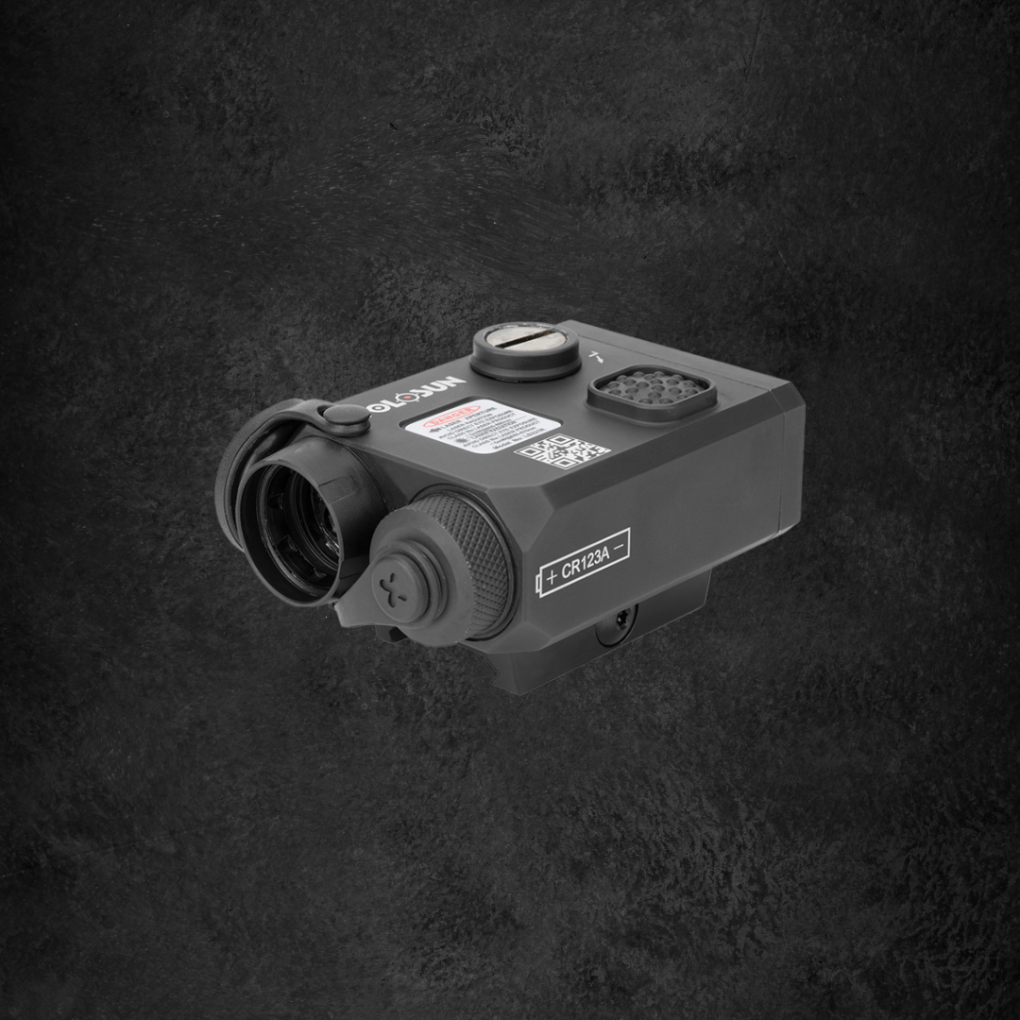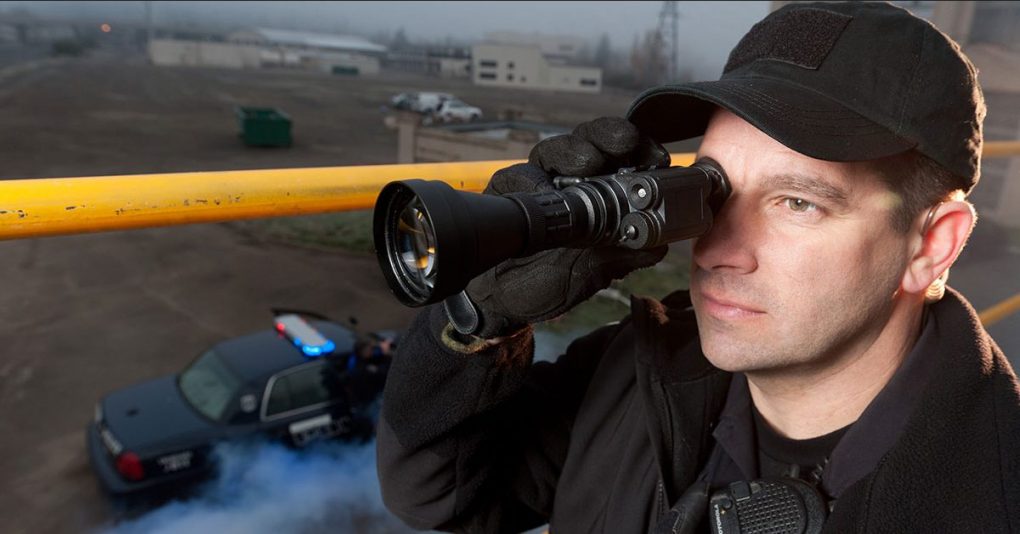Infrared (IR) illuminators are devices used in conjunction with night vision devices to improve visibility in low- or no-light settings. These illuminators emit light in the infrared spectrum, which is invisible to the human eye but can be picked up by night vision goggles and cameras.
Choosing the right IR illuminator is essential for ensuring high-quality night vision imaging. This article will explain the basics of IR illuminators, compatible night vision devices, the range of the IR illuminator, environmental considerations, and the factors to consider when choosing the right model.
→ Take some time to discover more about IR Illuminator in articles by Steele Industries:
– HOW TO CHOOSE AN IR LASER AIMING DEVICE FOR NIGHT VISION
– For more reading, visit our blog!
⇒ Contact:
-Call us at (800) 674-7302
-E-mail: sales@steeleindinc.com
–Facebook/ steeleindustriesinc
–Instagram/steeleindustriesinc
Understanding the Basics of IR Illuminators
IR illuminators are a critical component of a night vision device, as they provide the necessary infrared light for the device to function.
The functions and types of IR illuminators, as well as power and wavelength options, must be considered in order to select the right IR illuminator for a given night vision device.
IR illuminators come in various shapes and sizes, with many providing adjustable power and wavelength outputs, and some even featuring motion detection and dimming capabilities.
Functions and Types of IR Illuminators
Illumination is an essential component of the night vision process, so understanding the various functions and types of illuminators is an important step in selecting the best solution. IR illuminators serve the purpose of providing light in the infrared spectrum to make night vision devices effective.
The following are some key characteristics of IR illuminators:
- IR illuminators come in a variety of shapes, sizes, and intensities, making them suitable for a wide range of applications.
- Some IR illuminators are designed for short-range illumination, while others are designed to illuminate a large area.
- IR illuminators may be powered by electricity or batteries, depending on the requirements of the application.
- Infrared illuminators can be used in combination with other light sources for enhanced performance.
- IR illuminators may also feature adjustable focus and variable power settings, allowing users to customize the illumination for their specific needs.
Depending on the application, different types of IR illuminators may be more suitable. Traditional IR illuminators are typically low-power, short-range illuminators that emit a narrow beam of light. High-power IR illuminators, on the other hand, produce a wide beam of light that is suitable for long-range illumination.
Additionally, some IR illuminators are designed to be used in conjunction with other light sources, such as visible light illuminators, to provide enhanced illumination and performance.
Power and Wavelength Options
The power and wavelength of an illuminator are important factors to consider when selecting the best solution for a given application.
The power of an IR illuminator is measured in milliwatts (mW), and the wavelength is measured in nanometers (nm).
Depending on the application, different power and wavelength levels may be required.
For example, if the application involves long-distance viewing, a higher power and shorter wavelength should be chosen.
On the other hand, for applications that require short-distance viewing, a lower power and longer wavelength should be used.
The power and wavelength of an IR illuminator should be selected carefully in order to achieve the desired results.
The illuminator should be powerful enough to provide adequate lighting for the application, and the wavelength should be appropriate for the type of night vision device being used.
It is also important to consider the environment in which the illuminator will be used, as this can influence the power and wavelength required.
Additionally, it is important to consider the cost of the illuminator when selecting the best solution for a given application.
Compatible Night Vision Devices
When selecting a night vision illuminator, it is important to consider its compatibility with the night vision goggles and monoculars it will be used in conjunction with.
It is important to check the compatibility of the illuminator and the night vision device before purchasing, as many illuminators are designed for specific devices and will not work with others.
Additionally, the range of the illuminator must be taken into account, as it must be powerful enough to function in the environment in which it is being used.
Compatibility with Night Vision Goggles and Monoculars
Careful consideration must be taken when determining compatibility with night vision goggles and monoculars when selecting an illuminator. It is important to ensure the illuminator is compatible with the specific type of night vision goggles or monoculars being used, as different devices have different compatibility requirements.
The most commonly used night vision devices are night vision goggles and monoculars, and they are generally designed to work with certain types of illuminators. Illuminators come in a variety of shapes, sizes, and power outputs, so it is important to make sure the illuminator chosen is compatible with the night vision device being used.
It is also important to consider the amount of light emitted by the illuminator, as this will affect the performance of the device. Illuminators that emit too much light can cause an increase in noise, which can reduce image quality. Conversely, illuminators that emit too little light can cause the image to be too dark and difficult to see.
The ideal illuminator should produce an even, consistent amount of light that is not too bright or too dim. Additionally, the illuminator should be able to evenly illuminate a wide area and should not produce excessive glare.
Range of the IR Illuminator
When selecting the correct IR illuminator for a night vision device, it is important to consider the range of the illuminator.
Short-range illuminators are typically used for close-up applications, while medium and long-range illuminators are best for viewing targets at a distance.
Factors that can affect the range of an illuminator include the total output power, the size of the emitter, and the number of emitters used.
Short, Medium, and Long-Range Illuminators
At night, optimal illumination is essential for the success of any operation, and selecting between a short, medium, or long-range illuminator will determine the amount of light given off.
Short-range illuminators are ideal for short-distance applications, due to their relatively strong intensity of light, and are often used in surveillance cameras. They are generally limited in range to around 50-100m, making them suitable for most short-distance applications.
Medium-range illuminators, on the other hand, have a much wider range, usually up to 500m, making them suitable for a variety of medium-distance applications. They have a lower intensity of light than short-range illuminators, but still have enough power to provide adequate illumination for medium-distance applications.
Finally, long-range illuminators are used for applications that require illumination from greater distances, usually up to 1km. They have a lower intensity than medium-range illuminators, but have the added benefit of being able to provide illumination from farther distances.
Factors Affecting Illuminator Range
Having discussed short, medium, and long-range illuminators, it is important to consider the factors that affect illuminator range.
Range is determined by the power of the illuminator and the amount of ambient light present. The higher the power output of the illuminator, the greater the range it will have in low-light conditions. The presence of ambient light, such as the moon and stars, can also affect the range of the illuminator, as it can increase the visibility of the object being illuminated.
In addition to the power of the illuminator and the presence of ambient light, the type of lens used in the device can also affect the range of the illuminator. For example, a telephoto lens will have a greater range than a wide-angle lens. The size of the illuminator also plays a role in the range of the device, as larger illuminators typically have greater range than smaller models.
Lastly, the type of light source used in the illuminator can have an impact on the range as well, with higher-powered light sources offering greater range.
Environmental Considerations
When selecting an infrared illuminator for a night vision device, environmental factors must be taken into consideration.
Weather conditions can drastically alter the performance of the illuminator, as wet or humid climates can limit the range of the device.
Terrain and vegetation can also affect performance of the illuminator, as certain objects and surfaces can absorb or reflect the infrared light.
In order to ensure the night vision device operates optimally, it is important to choose an illuminator that is suited to the surrounding environment.
Impact of Weather Conditions
Depending on the environment, weather conditions can have a significant effect on the performance of a night vision system.
Rain, fog, and other precipitation can reduce the amount of light available for the night vision device to collect and process. This can lead to a decrease in range and clarity of the image produced by the device, making it difficult to identify people or objects in the distance.
Temperature can also affect the performance of night vision devices. A device operating at too high or too low a temperature can cause the image to become distorted or abnormally bright.
When selecting an IR illuminator, it is important to consider the weather conditions in the area of operation. If the environment is likely to experience fog, rain, or snow, a more powerful illuminator may be necessary to ensure that the night vision device can still produce a usable image.
Similarly, if the area is known to experience extreme temperatures, a more robust illuminator should be chosen to ensure that the image produced is not distorted or overly bright. Selecting the right illuminator for the environment will help to ensure optimal performance from the night vision device.
Terrain and Vegetation Factors
The terrain and vegetation of an area can significantly affect the performance of a night vision system.
When selecting an infrared illuminator for a night vision device, it is important to consider the potential obstacles that could block the light emitted from the illuminator.
For example, if the area is heavily wooded, the IR light may not be able to penetrate the trees.
In addition, if the area contains a lot of reflective surfaces such as water or sand, the illuminator must have enough power to overcome the reflections and ensure that the light reaches its target.
Additionally, if the area is hilly or mountainous, the illuminator must have enough power to penetrate the terrain and ensure that the light reaches its intended target.
Therefore, when selecting an IR illuminator for a night vision device, it is important to consider the terrain and vegetation of the area.
Choosing the Right Model
When choosing the right model for an infrared illuminator for your night vision device, there are several key features to consider such as the wavelength, the type of illuminator, the power output, and the beam angle.
In addition, one must also consider their budget to determine which model best suits their needs.
Finally, additional features such as the build quality, the battery life, and the size of the illuminator may also be taken into account when selecting the right model.
Features to Consider
Evaluating the features of an infrared illuminator can be the key to selecting the best one for a night vision system. Potential buyers should consider the following important features before making a purchase:
- Power Source: Generally, infrared illuminators can be powered either by batteries or mains. Choosing the right power source for the environment the illuminator will be used in is key.
- Light Output: The output of light from an illuminator is usually measured in lux at a given distance. Knowing the level of light output needed for a particular environment is essential for selecting the proper illuminator.
- Beam Pattern: Different beam patterns can be used depending on the environment. For example, a flood pattern is better for a wide area, whereas a spot pattern is better for a concentrated area.
- Cost: Cost is always an important factor to consider when selecting an infrared illuminator. Knowing the budget and finding the best model that fits within it is important.
Taking all these features into account will help buyers choose the right infrared illuminator for their night vision device.
Budget and Additional Features
Having determined the essential features of an IR illuminator, it is now important to consider a budget and any additional features that may be desirable.
It is important to remember that quality IR illuminators can be expensive, and there is no need to purchase a product that is beyond the budgeted amount. Careful consideration should be taken to ensure that the quality of the illuminator does not suffer by selecting an illuminator that is too low in price.
In addition, certain features may be of interest when selecting an illuminator. For example, some illuminators are designed to be used outdoors, and can be waterproof or weatherproof. Other features to consider include the illumination range, the angle of illumination, and the beam spread.
These features can have a significant impact on the performance of the illuminator and should be taken into account when making a purchasing decision. Furthermore, the power source of the illuminator is also an important factor, as some illuminators are powered by an AC adapter, whereas others are powered by a battery.
A Few IR Illuminators Offered by Steele Industries
HOLOSUN LS221G (GREEN & IR)

Description:
The LS221G is a multi-laser aiming device with a 7075 Aluminum body. It incorporates a class IIIA visible green laser and a class 2M IR laser, both coaxially mounted for effortless zeroing. Additionally, it offers a quick-release Picatinny rail mount, a remote pressure switch, and IP67-rated water resistance.
In the Box
- QD Release Mount
- Remote Cable Switch
- T10 L Key
- User Manual
- CR123A Battery
LASER DATA
- Laser & Illuminator Type Dual Laser
- White LED Output N/A
- IR Illuminator Class N/A
- IR Illuminator Output 0.7mw
- IR Pointer Class N/A
- IR Pointer Output 0.1mw (low)/0.7mw (high)
- Visible Laser Class IIIA
- Visible Laser Output1mw (low)/5mw (high)
ELECTRONIC DATA
- Power Source Battery
- Battery Type CR123A
- Battery Life (Hours) Up to modes
- Brightness Setting Up to modes
PHYSICAL DATA
- Window Size N/A
- Dimension (in) 3.4×1.9×1.5
- Weight (oz) 6.7
MECHANICAL DATA
- Housing Material 7075 T6 Aluminum
- Surface Finish MAO
- Adjustment per Click 0.5 MOA
- W&E Travel Range ±50 MOA
ENVIRONMENT DATA
- Storage Temperature -40℃~65℃
- Working Temperature -40℃~51℃
- Submersion IP67
- Vibration 1000G
HOLOSUN LS321G (GREEN VIS, IR POINTER & ILLUMINATOR)

Description:
The LS321G is a multi-laser aiming device with a 7075 Aluminum body. It features a class IIIA visible red laser, class 2M IR laser, and an IR illuminator, all coaxially mounted for simple zeroing. Additionally, it includes an IR illuminator focus adjustment, a quick-release Picatinny rail mount, a remote pressure switch, and IP67-rated water resistance.
In the Box
- QD Release Mount
- Remote Cable Switch
- T10 L Key
- User Manual
- CR123A Battery
LASER DATA
- Laser & Illuminator Type Dual Laser & IR Illuminator
- White LED Output N/A
- IR Illuminator Class N/A
- IR Illuminator Output0.7mw
- IR Pointer Class N/A
- IR Pointer Output 0.1mw (low)/0.7mw (high)
- Visible Laser Class IIIA
- Visible Laser Output 1mw (low)/5mw (high)
ELECTRONIC DATA
- Power Source Battery
- Battery Type CR123A
- Battery Life (Hours) Up to modes
- Brightness Setting Up to modes
PHYSICAL DATA
- Window Size N/A
- Dimension (in) 3.6×2.2×1.6
- Weight (oz) 8.64
MECHANICAL DATA
- Housing Material 7075 T6 Aluminum
- Surface Finish MAO
- Adjustment per Click 0.5 MOA
- W&E Travel Range ±50 MOA
ENVIRONMENT DATA
- Storage Temperature -40℃~65℃
- Working Temperature -40℃~51℃
- Submersion IP67
- Vibration 1000G
Conclusion
It is essential to consider a range of factors when selecting an IR illuminator for a night vision device. Besides, ensuring that the illuminator is compatible with the device, as well as being appropriate for the environment in which it will be used is important as well.
Additionally, the range of the illuminator should be considered, to ensure that it is suitable for the desired application.
By carefully weighing up the various factors, one can choose the right model of IR illuminator for their night vision device.
Ultimately, the right illuminator will help to ensure optimal performance and efficiency from the night vision device.


